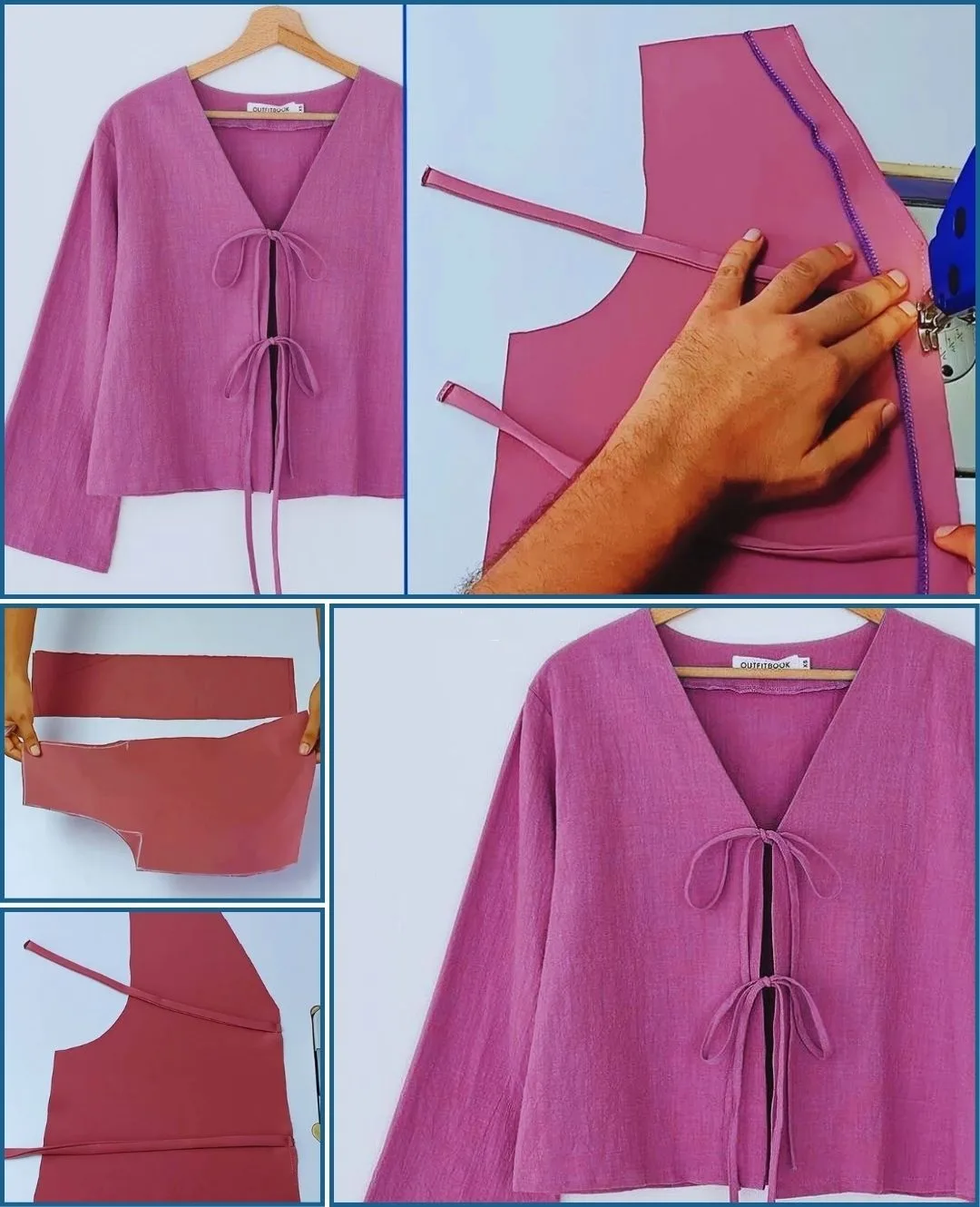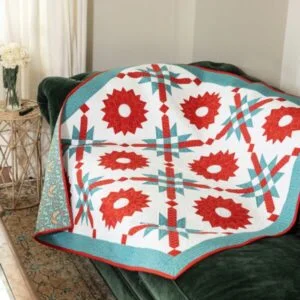How to sew a blouse with front ties is a delightful and rewarding project for sewing enthusiasts of all levels. Whether you’re new to sewing or a seasoned maker, creating a front-tie blouse lets you express your creativity while designing a comfortable, stylish piece for your wardrobe. These blouses are perfect for casual outings, office wear, or even a beach look depending on your fabric choices.
In this tutorial, we’ll guide you step by step through the entire process of how to sew a blouse with front ties, from choosing the right fabric to adding that final flattering knot at the front. With the right preparation and some patience, you’ll end up with a blouse that fits well and showcases your personal style.
This project is also a great opportunity to practice important sewing skills like hemming, adding darts, and finishing necklines. By the end of this article, you’ll know exactly how to sew a blouse with front ties that’s fashionable and durable.

Choosing the Right Fabric and Pattern
Selecting the best fabric is essential for sewing a successful blouse with front ties. Light to medium-weight fabrics work well for this project, such as cotton, rayon, linen, or a soft lawn. These fabrics are breathable and provide just the right amount of drape for the front ties to fall naturally.
Look for patterns specifically designed for blouses with tie-fronts. These patterns often include helpful markings and instructions that make the process easier for beginners. If you’re drafting your own pattern, remember to include extra fabric allowance at the front for the ties.
Color and print can dramatically affect the overall look. Solids are classic and versatile, while florals and geometric patterns give your blouse a unique personality. Choose a design that complements your wardrobe and your sewing experience.
Always wash and press your fabric before cutting. Pre-washing ensures that your blouse won’t shrink or distort after your first wear. Ironing smooths out any creases that could affect pattern accuracy during cutting.
Make sure to lay out your fabric on a clean, flat surface. Pin your pattern pieces carefully, especially around the front tie section. Cutting accurately is key to ensuring the two front pieces match up when tied.
Lastly, keep your tools organized: fabric scissors, pins, tailor’s chalk, and a clear ruler are must-haves. Being organized helps streamline the process and avoids unnecessary mistakes along the way.
Cutting and Preparing Your Blouse Pieces
Once your fabric is prepped, it’s time to cut out the blouse pieces according to your pattern. If you’re working with directional prints, double-check the orientation to ensure your design aligns properly across the blouse.
The front tie pieces are typically an extension of the front bodice. Follow the guide on your pattern and transfer all markings, including darts and notches, using tailor’s chalk or washable markers.
Use fabric weights or pins to secure your pattern to the fabric before cutting. This prevents the fabric from shifting and helps maintain clean, even lines.
After cutting, staystitch the neckline and any curved areas to prevent them from stretching out while handling. This step is especially important for lightweight fabrics like rayon or crepe.
Mark your darts clearly and be precise when folding and pinning them. Darts help shape the blouse to your body and give a more flattering fit around the bust.
Set aside your cut pieces in the order you will sew them. This helps maintain workflow and avoids confusion during the assembly process.
Sewing the Main Bodice and Ties
Begin by sewing the bust darts on both front bodice pieces. Stitch from the wide end of the dart to the point, and then tie off your threads rather than backstitching for a cleaner finish.
Once darts are sewn and pressed, align the shoulder seams of the front and back bodice pieces with right sides together. Pin and sew them, then press the seams open to reduce bulk.
Now it’s time to focus on the front ties. Fold each tie right sides together, sew along the edge, and trim any excess seam allowance. Turn them right side out using a loop turner or a pencil, then press flat.
With ties prepared, align and sew the side seams of your blouse. Again, press the seams open or to one side depending on the fabric’s weight and how it behaves under heat.
Attach the sleeves if your blouse has them. Match the notches and sew slowly to avoid puckering. Press the seams toward the bodice.
Finally, hem the bottom of the blouse and finish the sleeves. A double-fold hem gives a neat look and prevents fraying. Now you’re ready to tackle the neckline.
Finishing the Neckline and Assembling Details
For a polished finish, choose between a facing or a bias binding to complete the neckline. A facing is easier and often included in commercial patterns, while bias binding offers a clean and decorative option.
If using bias tape, pin it around the neckline edge with right sides together. Sew, trim excess seam allowance, then fold the tape to the inside and topstitch close to the edge.
Make sure the neckline sits flat by pressing it well after stitching. If any puckering occurs, use steam and gentle stretching while pressing to correct the shape.
Finish any raw edges inside the blouse with a zigzag stitch, pinking shears, or a serger. This step extends the life of your blouse and prevents fraying over time.
Next, tie the front ties into a bow or simple knot to check alignment. Make any necessary adjustments before wearing or gifting your finished garment.
Give your blouse one final press and admire your hard work. You’ve just learned how to sew a blouse with front ties that’s beautiful, functional, and entirely your own.
FAQ – Frequently Asked Questions
What fabric is best for sewing a blouse with front ties?
Light to medium-weight fabrics such as cotton, rayon, and linen are ideal. These fabrics drape well and make the front ties look natural and flattering.
Do I need a specific pattern to sew a blouse with front ties?
It’s recommended, especially for beginners. A dedicated pattern provides exact measurements and guides to help you achieve a perfect fit and balanced ties.
Can I sew a blouse with front ties as a beginner?
Yes! As long as you take your time and follow each step carefully, how to sew a blouse with front ties can be a very beginner-friendly project.
How long does it take to make a tie-front blouse?
Depending on your experience level and whether you’re adding sleeves, it typically takes 2–4 hours from start to finish, including cutting and pressing.
What tools will I need for this project?
You’ll need fabric scissors, pins, tailor’s chalk, a sewing machine, matching thread, and an iron. A loop turner is helpful for the ties, but not required.
Can I use knit fabric for this type of blouse?
It’s possible, but the structure and drape may differ. Woven fabrics are usually preferred for tie-front blouses because they hold their shape better.
Conclusion
Now you know exactly how to sew a blouse with front ties—from choosing the right fabric and pattern to sewing and finishing your unique creation. This sewing project offers a perfect balance between creativity and practicality, giving you the opportunity to build a beautiful wardrobe piece you’ll actually wear.
We hope this step-by-step guide has been helpful and enjoyable. If you’ve made your own version of a front-tie blouse or have tips, feedback, or questions, please leave a sincere opinion and share your suggestions. Your input helps others learn and improves future tutorials!



